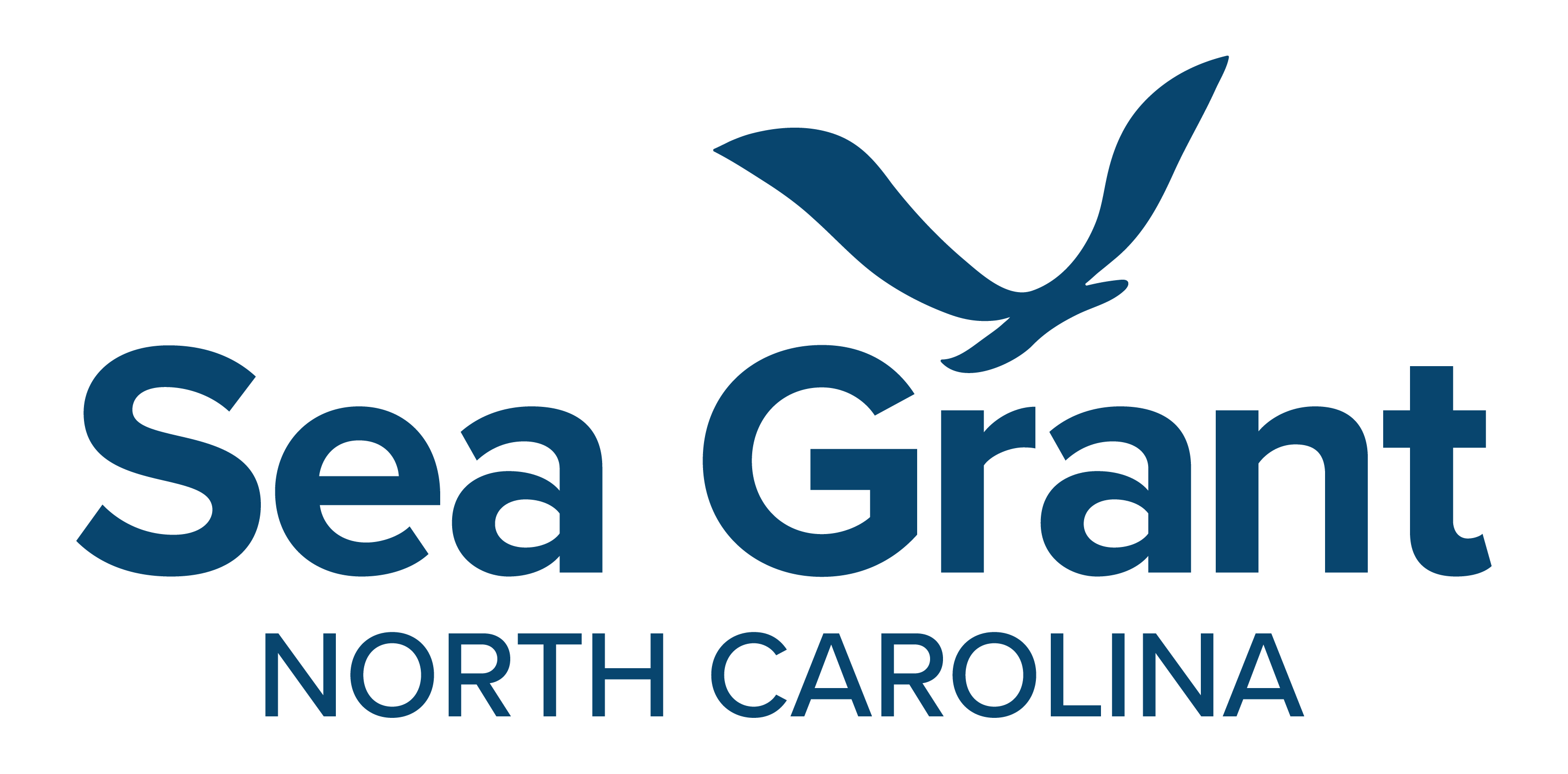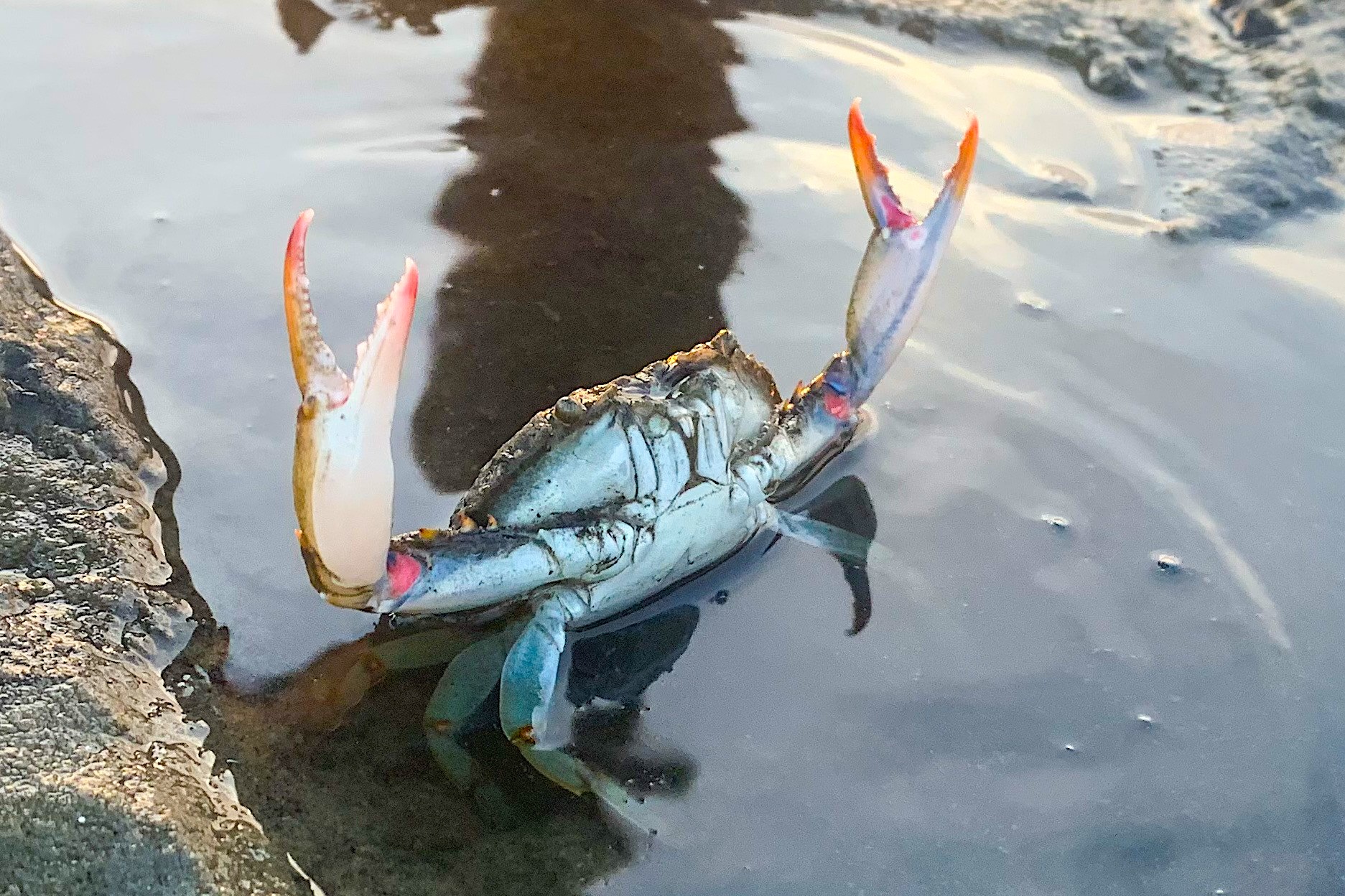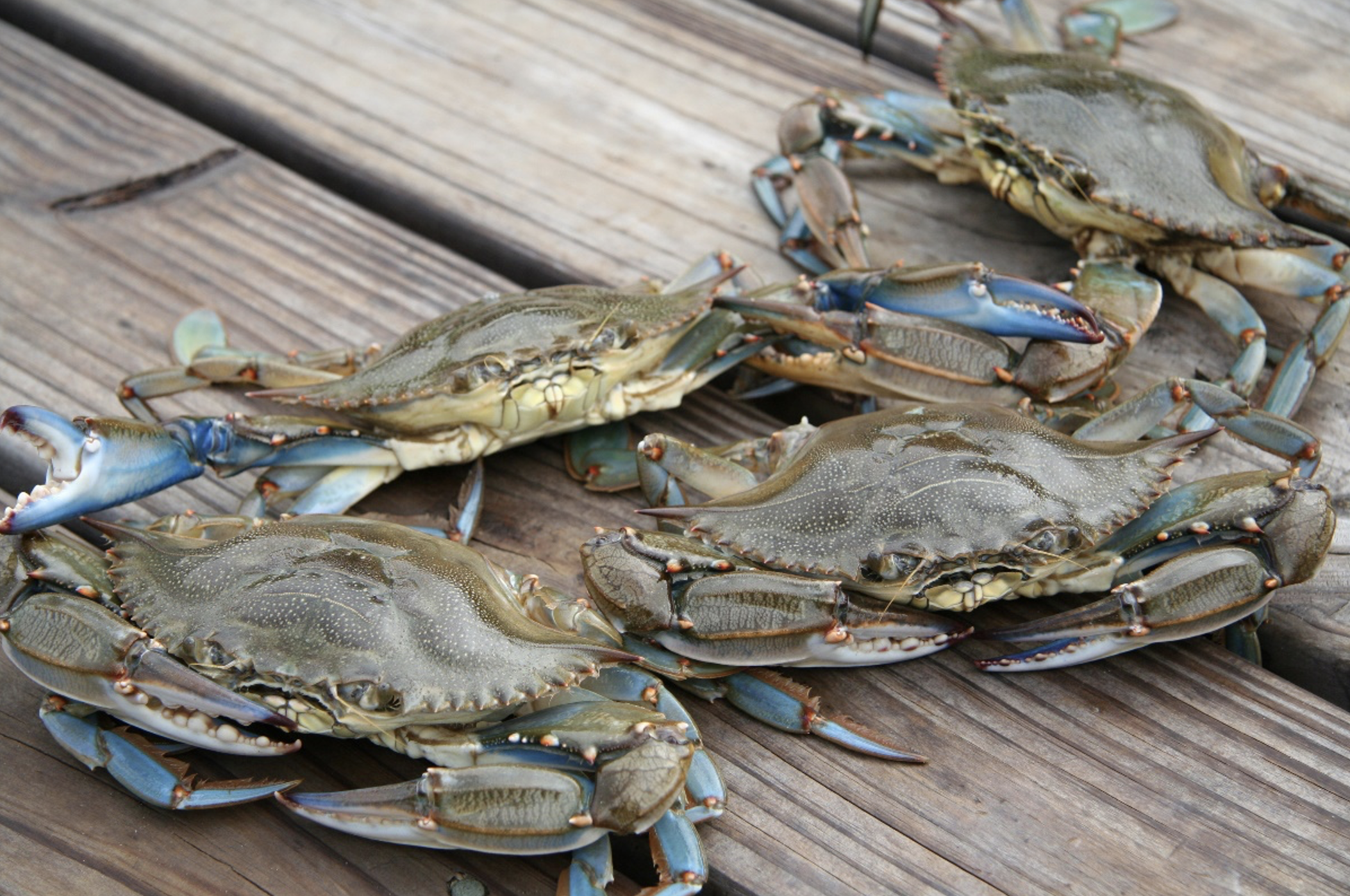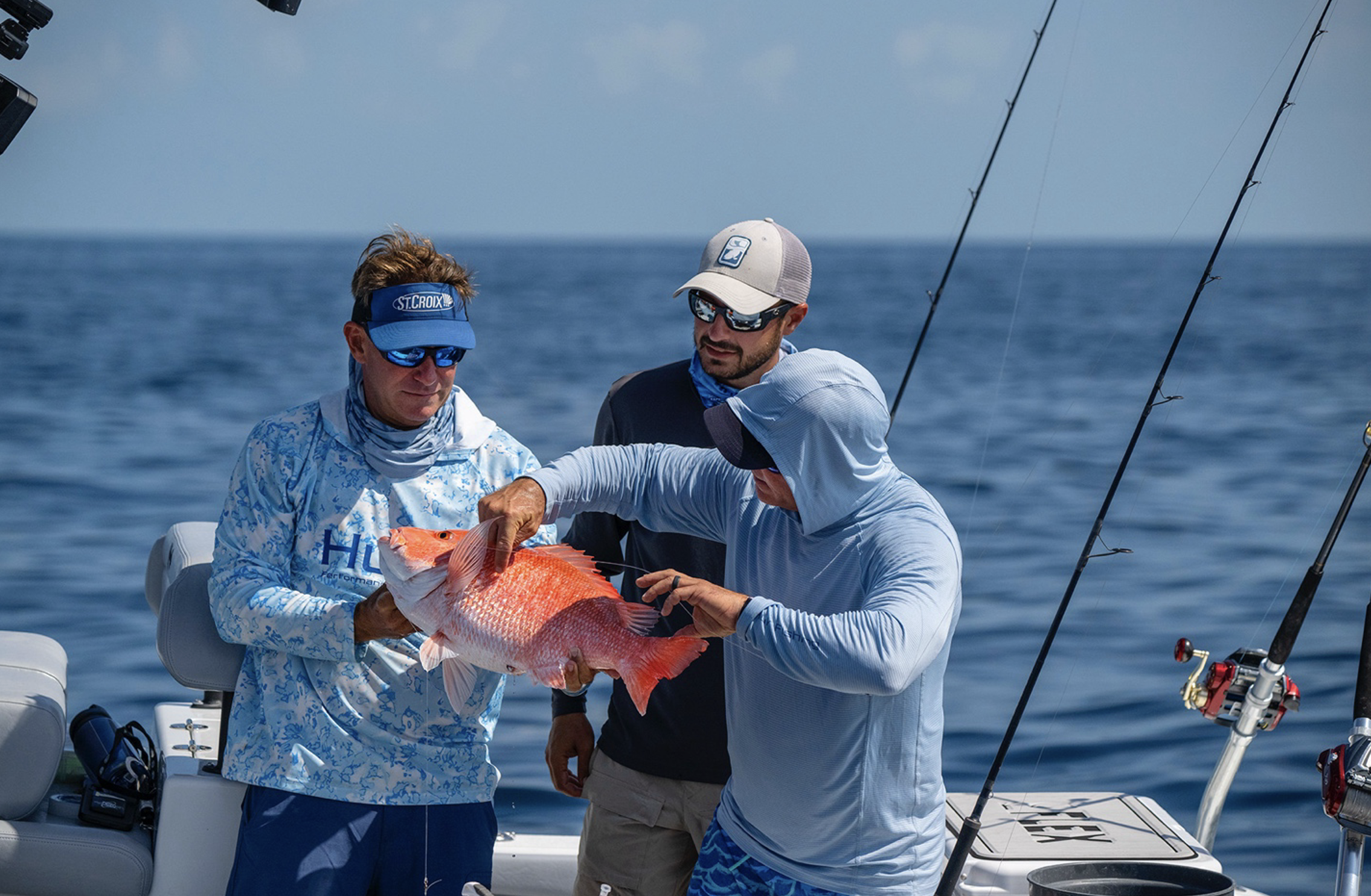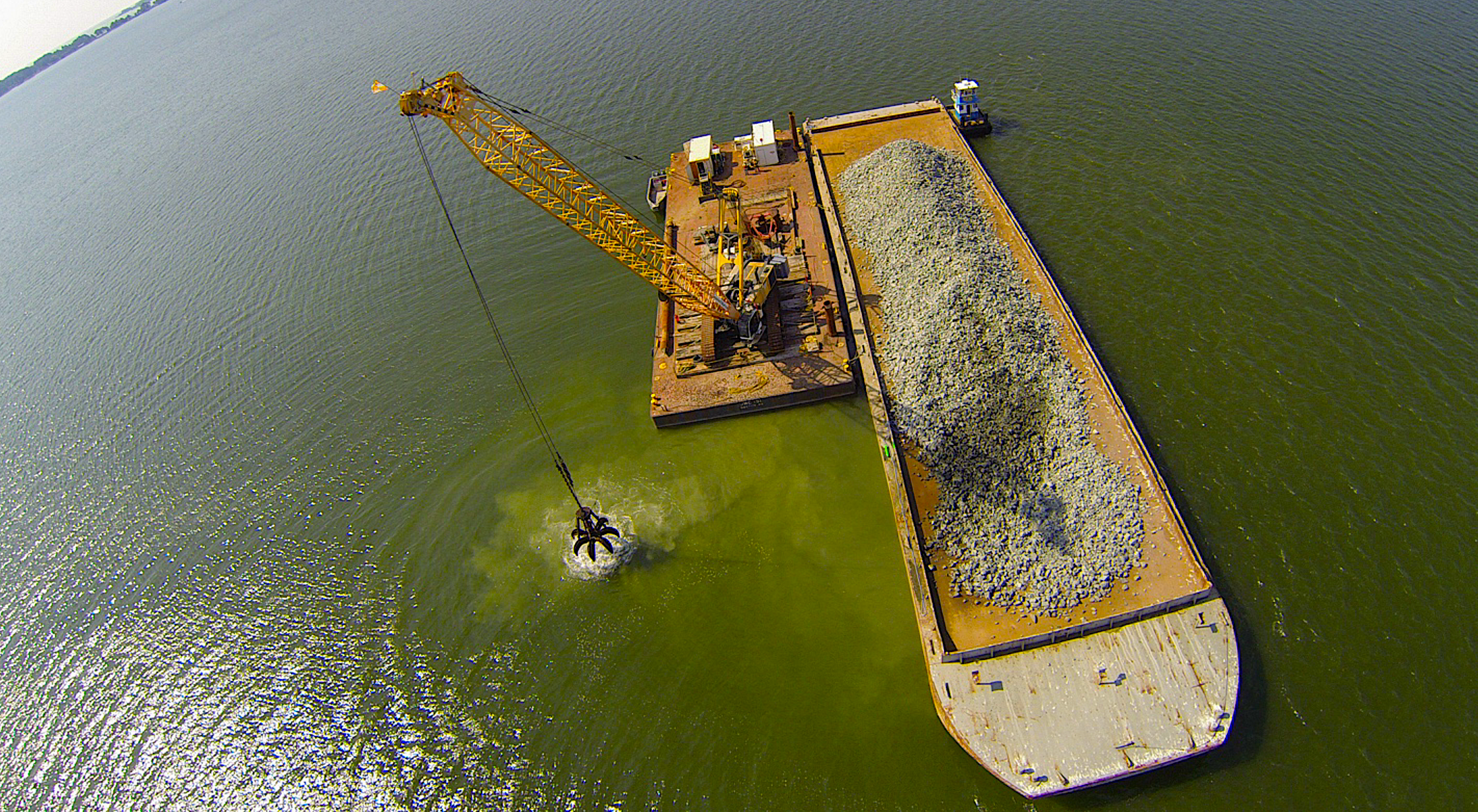Environmental stressors may push blue crab populations to their breaking point.
Research Need
The North Carolina blue crab fishery is the state’s most valuable commercial fishery. However, the blue crab stock is depleted from fishing and is vulnerable to environmental stressors like temperature changes and harmful chemicals.
Extreme temperatures can negatively impact growth, reproduction, and the overall survival of blue crabs. Additionally, chemicals often in untreated wastewater can disrupt natural processes like molting, further increasing mortality rates.
While previous studies have explored the effects of temperature and chemical contaminants on individual blue crabs, little is known about population-level affects.
What did they study?
Researchers built a computer model that mimics the life cycle of individual blue crabs, including their growth, reproduction, and survival. They ran simulations using 30 different climate and pollution scenarios to see how temperature and chemical changes might impact North Carolina’s crab population over time.
Temperature simulations ranged from no increases to a 0.75° F increase per year over 50 years. Chemical scenarios ranged from no chemicals present to levels that for humans would prompt a health advisory.
Researchers also explored how the timing of exposure to chemicals affected blue crabs, comparing the impacts of short, seasonal chemical exposure to continuous exposure.
What did they find?
Chemical contaminants significantly impacted blue crabs.
At “low” chemical levels, the harvest weight of blue crabs dropped by roughly 17%, and when scaled for 2021 commercial blue crab landings, resulted in a catch reduction of nearly 2.2 million pounds.
Continuous chemical exposure resulted in a major decline in population at all levels at all temperatures. At low chemical levels, blue crabs became extinct at the five-year mark, whereas at high chemical levels extinction happened in less than one year.
Even with short-term seasonal exposure, if the chemical levels were at the moderate to high levels, the model predicted the blue crab population would be extinct at 20 years and 10 years respectively.
What else did they find?
Blue crabs were relatively resilient to moderate changes in temperature. However, severe temperate shifts led to significant declines in catch. Both temperature changes and chemical contaminants also reduced the number of large, harvestable crabs in the population.
So what?
Extreme summer temperatures will likely have negative impacts on blue crabs populations. Not only will this reduce catch for fishers, but it will also affect reproduction as larger, slower-growing crabs die off before reaching reproductive maturity.
With time, the population will shift to smaller crabs that can reproduce, which would also lead to a decrease in the overall size of the blue crab population and reduce the harvestable amount of crabs.
In addition to warming waters, urbanization along North Carolina’s coast poses a growing risk for increased chemical contamination in coastal waters. However, data on the species-specific impacts of these chemicals remain scarce. This research explored a range of contamination scenarios for blue crabs, from the most realistic (short-term, low level exposure) to the most extreme (continuous, high level exposure), providing a framework that resource managers and researchers can refine as new data emerge.
Reading
Rocco, A. J., Cao, J., Li, Y., & Lee, L. M. (2024). Evaluating impacts of environmental stress and bioactive chemicals on the North Carolina blue crab population: An individual-based model. Marine and Coastal Fisheries, 16(2), e10286. https://doi.org/10.1002/mcf2.10286
This study was funded by North Carolina Sea Grant and North Carolina State University.
Lead photo by Alexis Longmire.
The text from Hook, Line & Science is available to reprint and republish at no cost with this attribution: Hook, Line & Science, courtesy of Scott Baker and Sara Mirabilio, North Carolina Sea Grant.
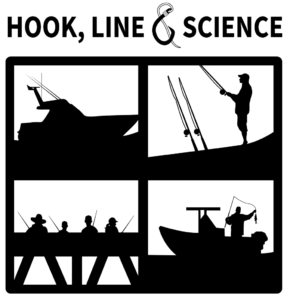
- Categories:
